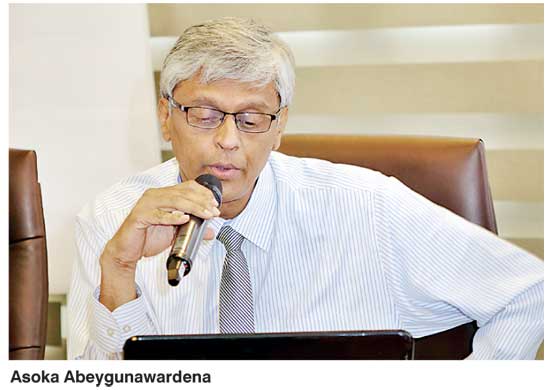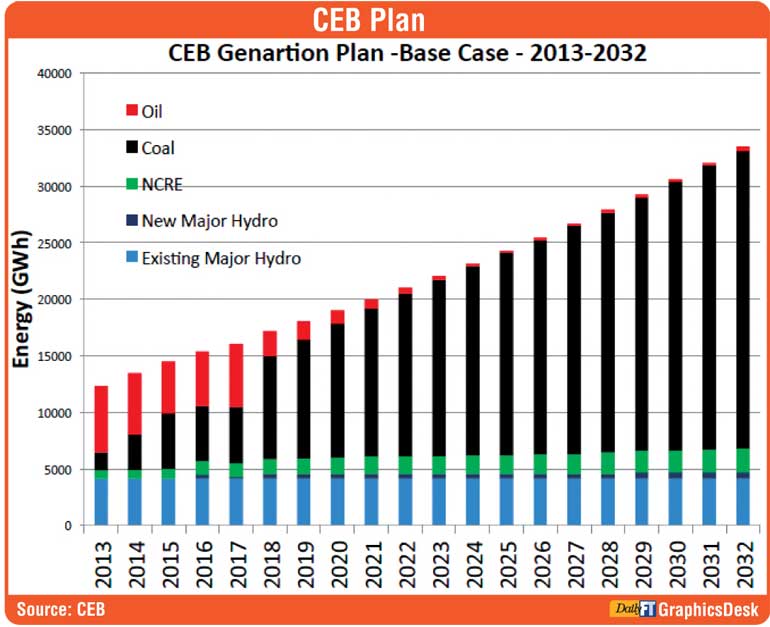Sunday Dec 15, 2024
Sunday Dec 15, 2024
Tuesday, 24 November 2015 00:03 - - {{hitsCtrl.values.hits}}
By Zahrah Rizwan
Climate change is one of the key challenges that the world is facing today. Sri Lanka is already feeling its impacts. When discussing about climate change, mitigation becomes a key component, given that it is the primary form to reduce impacts of climate change. More the emissions, more the impacts, and today the world cannot afford to emit carbon dioxide and greenhouse gases to the world, while the world in on a dangerous trajectory of increase in temperature which would if not addressed make the world uninhabitable for humans and other species.
At present the Intended Nationally Determined Contributions (INDC), a means of addressing the issue of climate change by countries  taking voluntary actions on emission cuts provide that the emission gaps are in the range of 12-14 Giga tons of CO2 equivalent a year which raises the question as to whether this is sufficient to stay below 1.5 °C as the average global temperature has increased more than 1°C of the expected level. The consolidated report prepared by the UNFCCC of submissions made by countries by 1st October 2015 provides that the current protected emission cuts will provide for an increase of 2.7 °C a level much higher than the needed 1.5°C level.
taking voluntary actions on emission cuts provide that the emission gaps are in the range of 12-14 Giga tons of CO2 equivalent a year which raises the question as to whether this is sufficient to stay below 1.5 °C as the average global temperature has increased more than 1°C of the expected level. The consolidated report prepared by the UNFCCC of submissions made by countries by 1st October 2015 provides that the current protected emission cuts will provide for an increase of 2.7 °C a level much higher than the needed 1.5°C level.
Considering the status of Sri Lanka, the long term generation expansion plan from 2015- 2034 of the Ceylon Electricity Board, indicates that another 3300 MW of coal power plants will be added to the current amount of 900MW available. Compared to 1990, there is an increase in CO2 by 600% and the CEB plan does not go in line with the thinking of the current government’s policy provided in manifesto or President Maithripala Sirisena which aims to fulfil basic energy requirements of the people using renewable energy sources such as Dendro (biomass) power, wind power, solar power and ocean energy, whereas the CEB intends to satisfy the demands by adding more mega watts of coal.
According to Asoka Abeygunawardena who spoke at the briefing on 21st Conference of Parties of the United Nations Convention on Climate Change which was organised by Climate Action Network South Asia, the President has instructed the authorities to revisit the CEB plan and to check on the costs which will be incurred for the country to move to a renewable energy plan, and satisfying the needs of the energy sector through renewable energy and technology. Transport and industrial sectors also need to be considered, as the above example only addresses the CEB plan, while the other sectors remain needing formulation of plans, according to Abeygunawardene.

“Considering the lifetime of power plants, renewable energy sources are much cheaper. A rear view at Sri Lanka in the 1990s would reveal to us that over 90% of the energy was generated in our country was through non fossil fuel based sources, whereas now we depend on fossil fuel,” said Abeygunawardena.
Her further added that it is time for developing countries to look inwards rather than wait in anticipation for the developed countries to make changes in order to deal with climate change, as we possess the required resources to contribute but lack proper planning and policies in order to tap these sources.
The 21st Conference of Parties of the UNFCCC will be held from 30 November till 10 December in Paris, with the participation of 196 Parties to the Convention, and over thousands of representatives from different stakeholder groups working on climate change. It is expected that Sri Lankan delegation will be headed by the President himself, and that the country would commit to taking concrete actions to address climate change at the national as well as the international level.
*Statistics based on the presentation done by Asoka Abeygunawardana, Chairman Strategic Enterprise Management Agency, at the Climate Change: Priorities and Concerns workshop organised by the Climate Action Network South Asia and Southern Voices, in collaboration with Janathakshkan and Sri Lankan Youth Climate Action Network for Sri Lanka